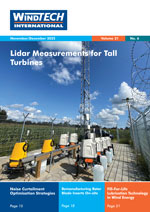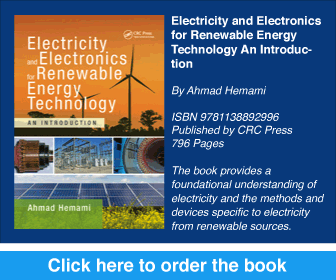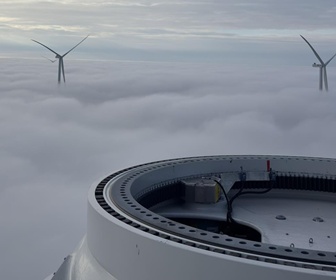- Category: Articles
A New Approach to Tightening Bolts
 Throughout the world bolts are tightened in accordance with procedures based upon the application of a predetermined torque. However, regardless of the accuracy to which the torque is applied, the actual load present in the fastener can vary by as much as 60%. Factors such as lubrication, thread fits, washer hardness and human error can all contribute to the variability when applying a correct load.
Throughout the world bolts are tightened in accordance with procedures based upon the application of a predetermined torque. However, regardless of the accuracy to which the torque is applied, the actual load present in the fastener can vary by as much as 60%. Factors such as lubrication, thread fits, washer hardness and human error can all contribute to the variability when applying a correct load.By Ben Walters, Managing Director, Scana UK Ltd, UK
- Category: Articles
New Procedure for Fault Ride-Through Testing and Certification
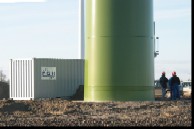 In recent years, the amount of energy produced by wind energy converters (WECs) has increased greatly, meaning that grid operators now have to focus on the power generation characteristics of WECs. In 2003, the German grid operator E.ON provided the first guidelines that stated new requirements on the power generation characteristics of WECs. These could not be fulfilled with the existing technology over the full range. The German research institute FGH decided to establish an accredited product certification body in accordance with the European standard EN 45011; this body certifies the conformity of power generation characteristics of WECs with the guidelines of grid operators.
In recent years, the amount of energy produced by wind energy converters (WECs) has increased greatly, meaning that grid operators now have to focus on the power generation characteristics of WECs. In 2003, the German grid operator E.ON provided the first guidelines that stated new requirements on the power generation characteristics of WECs. These could not be fulfilled with the existing technology over the full range. The German research institute FGH decided to establish an accredited product certification body in accordance with the European standard EN 45011; this body certifies the conformity of power generation characteristics of WECs with the guidelines of grid operators.By Volker Pitz and Karl-Heinz Weck, Forschungsgemeinschaft für Elektrische Anlagen und Stromwirtschaft (FGH) e.V., Germany
- Category: Articles
A Case Study in the Nordic Countries
The drawbacks of wind power from the power system point of view are its variability and unpredictability. However, these problems are greatly reduced when wind power is connected to larger power systems as these can take advantage of the natural diversity in variable sources. A large geographical spread of wind power will reduce variability, increase predictability and decrease the occasions with near zero or peak output. In this article, the situation in the Nordic countries (Denmark, Finland, Norway and Sweden) is described.
.
By Hannele Holttinen, VTT Technical Research Centre of Finland
- Category: Articles
Modern Solutions for an Age-Old Problem
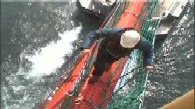 Since humans first went to the sea, we have experienced the problem of transferring people and materials between two heaving ships or between a heaving ship and the shore. With the many upcoming offshore wind farms this is still a topical subject. In this article, different solutions for this age-old problem are described and analysed.
Since humans first went to the sea, we have experienced the problem of transferring people and materials between two heaving ships or between a heaving ship and the shore. With the many upcoming offshore wind farms this is still a topical subject. In this article, different solutions for this age-old problem are described and analysed.By René Lok, Contributing Editor, Windtech International
- Category: Articles
The Future of Offshore Wind?
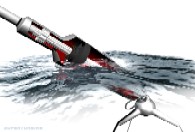 There is a pervasive notion that a turbine designed specifically for the marine environment will eventually supersede today’s less-than-perfect marriage of offshore oil drilling platform technology and traditional land-based wind turbines. New thinking points towards an offshore turbine that works with Nature, rather than against her. In this article, Douglas Selsam, building on the refinement of the horizontal axis rotor over the past 2,000 years, describes a new design that adds several of these highly refined rotors to the same driveshaft, for more power, higher rpm and less complexity.
There is a pervasive notion that a turbine designed specifically for the marine environment will eventually supersede today’s less-than-perfect marriage of offshore oil drilling platform technology and traditional land-based wind turbines. New thinking points towards an offshore turbine that works with Nature, rather than against her. In this article, Douglas Selsam, building on the refinement of the horizontal axis rotor over the past 2,000 years, describes a new design that adds several of these highly refined rotors to the same driveshaft, for more power, higher rpm and less complexity.By Douglas Spriggs Selsam, President Selsam Innovations, USA
- Category: Articles
A Tool for Monitoring White-Fronted Goose Movements
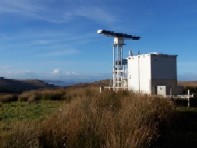 The UK government now has ambitious targets for the overall contribution of renewable energy to the UK’s energy budget. These higher targets have resulted in an increase in applications for onshore and offshore renewable energy developments. In the UK, many of the renewable resources with the most potential are at their greatest in Scotland. This has of course created some conflict, in particular with respect to wind generation, because of Scotland’s remote habitats and the species of conservation concern, including key bird species, that use these areas. Therefore, developers and statutory bodies have been pressed to seek state of the art assessment methods for accurately gauging potential environmental impacts.
The UK government now has ambitious targets for the overall contribution of renewable energy to the UK’s energy budget. These higher targets have resulted in an increase in applications for onshore and offshore renewable energy developments. In the UK, many of the renewable resources with the most potential are at their greatest in Scotland. This has of course created some conflict, in particular with respect to wind generation, because of Scotland’s remote habitats and the species of conservation concern, including key bird species, that use these areas. Therefore, developers and statutory bodies have been pressed to seek state of the art assessment methods for accurately gauging potential environmental impacts.By Richard Walls and Mark Parnel, Bird Management Unit, Central Science Laboratory (CSL), UK
.
- Planetary Gearboxes Help Alternative Energy
- Offshore Wind Farm Investigations
- Wind-Diesel Systems in Developing Countries
- The HiMast Development Programme
- Measuring Offshore Wind Vectors from Space
- Wind Energy Resource Map of State of Paraná, Brazil
- Optimising Wind Energy Capture
- Safety and Fire Behaviour
- Improving Bankability of Wind Power Projects
- Offshore Wind Turbine Foundations
- Wind Speed at Light Speed
- New Zealand’s Winds Harnessed
- Offshore Wind Farm Construction
- Comparing Models for Energy Output Estimation
- Sensors for Today’s Turbines
- Lubricant and Debris Analysis for Wind Turbines
- Electrical Transmission System for Offshore Wind Farms
- Carbon Credits and Wind Power
- Wind Energy Condition-Based Monitoring
- Offshore Wind Energy and UK Law
- Next-Generation Capacitors
- Scira Offshore Energy
- An Integrated Monitoring System for Offshore Wind Farms



